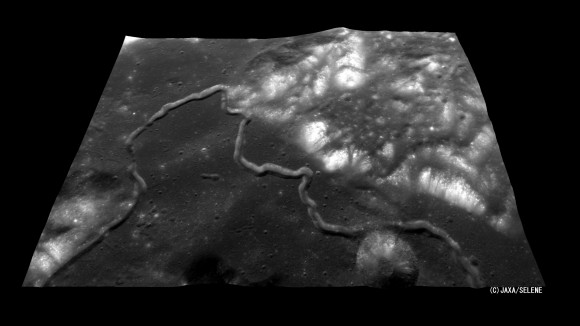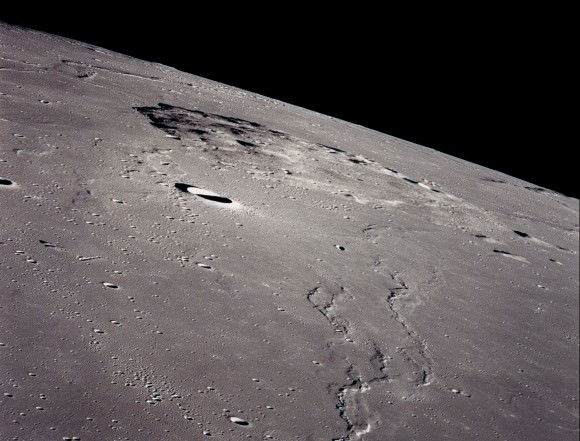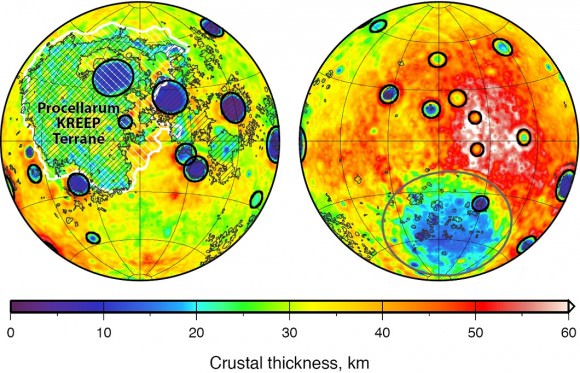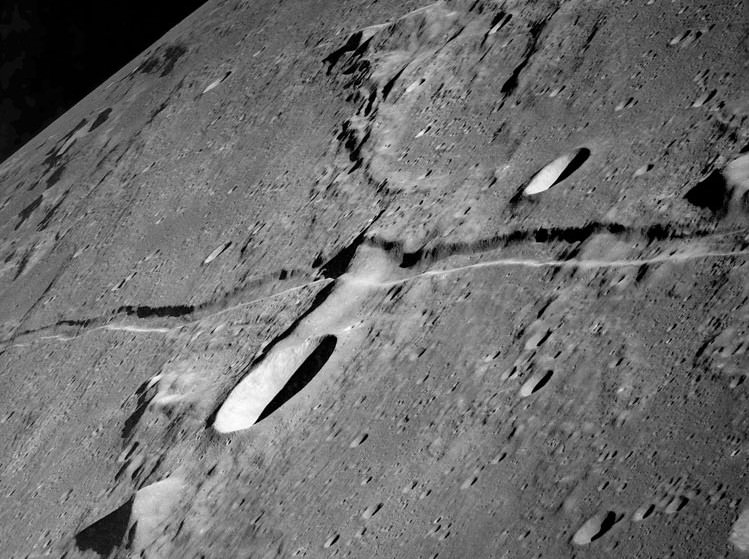Every year since 1970, astronomers, geologists, geophysicists, and a host of other specialists have come together to participate in the Lunar and Planetary Science Conference (LPCS). Jointly sponsored by the Lunar and Planetary Institute (LPI) and NASA’s Johnson Space Center (JSC), this annual event is a chance for scientists from all around the world to share and present the latest planetary research concerning Earth’s only moon.
This year, one of the biggest attention-grabbers was the findings presented on Tuesday, March 17th by a team of students from Purdue University. Led by a graduate student from the university’s Department of Earth, Atmospheric and Planetary Sciences, the study they shared indicates that there may be stable lava tubes on the moon, ones large enough to house entire cities.
In addition to being a target for future geological and geophysical studies, the existence of these tubes could also be a boon for future human space exploration. Basically, they argued, such large, stable underground tunnels could provide a home for human settlements, shielding them from harmful cosmic radiation and extremes in temperature.

Lava tubes are natural conduits formed by flowing lava that is moving beneath the surface as a result of a volcanic eruption. As the lava moves, the outer edges of it cools, forming a hardened, channel-like crust which is left behind once the lava flow stops. For some time, Lunar scientists have been speculating as to whether or not lava flows happen on the Moon, as evidenced by the presence of sinuous rilles on the surface.
Sinuous rilles are narrow depressions in the lunar surface that resemble channels, and have a curved paths that meanders across the landscape like a river valley. It is currently believed that these rilles are the remains of collapsed lava tubes or extinct lava flows, which is backed up by the fact they usually begin at the site of an extinct volcano.
Those that have been observed on the Moon in the past range in size of up to 10 kilometers in width and hundreds of kilometers in length. At that size, the existence of a stable tube – i.e. one which had not collapsed to form a sinuous rille – would be large enough to accommodate a major city.
For the sake of their study, the Purdue team explored whether lava tubes of the same scale could exist underground. What they found was that the stability of a lava tube depended on a number of variables- including width, roof thickness and the stress state of the cooled lava. he researchers also modeled lava tubes with walls created by lava placed in one thick layer and with lava placed in many thin layers.

David Blair, a graduate student in Purdue’s Department of Earth, Atmospheric and Planetary Sciences, led the study that examined whether empty lava tubes more than 1 kilometer wide could remain structurally stable on the moon.
“Our work is somewhat unique in that we’ve combined the talents of people from various Departments at Purdue,” Blair told Universe Today via email. “With guidance from Prof. Bobet (a civil engineering professor) we’ve been able to incorporate a modern understanding of rock mechanics into our computer models of lava tubes to see how they might actually fail and break under lunar gravity.”
For the sake of their research, the team constructed a number of models of lava tubes of different sizes and with different roof thicknesses to test for stability. This consisted of them checking each model to see if it predicted failure anywhere in the lava tube’s roof.
“What we found was surprising,” Blair continued, “in that much larger lava tubes are theoretically possible than what was previously thought. Even with a roof only a few meters thick, lava tubes a kilometer wide may be able to stay standing. The reason why, though, is a little less surprising. The last work we could find on the subject is from the Apollo era, and used a much simpler approximation of lava tube shape – a flat beam for a roof.

The study he refers to, “On the origin of lunar sinuous rilles“, was published in 1969 in the journal Modern Geology. In it, professors Greeley, Oberbeck and Quaide advanced the argument that sinuous rilles formation was tied to the collapse of lava flow tubes, and that stable ones might still exist. Calculating for a flat-beam roof, their work found a maximum lava tube size of just under 400 m.
“Our models use a geometry more similar to what’s seen in lava tubes on Earth,” Blair said, “a sort of half-elliptical shape with an arched roof. The fact that an arched roof lets a larger lava tube stay standing makes sense: humans have known since antiquity that arched roofs allow tunnels or bridges to stay standing with wider spans.”
The Purdue study also builds on previous studies conducted by JAXA and NASA where images of “skylights” on the Moon – i.e. holes in the lunar surface – confirmed the presence of caverns at least a few tens of meters across. The data from NASA’s lunar Gravity Recovery And Interior Laboratory (GRAIL) – which showed big variations in the thickness of the Moon’s crust is still being interpreted, but could also be an indication of large subsurface recesses.
As a result, Blair is confident that their work opens up new and feasible explanations for many different types of observations that have been made before. Previously, it was unfathomable that large, stable caverns could exist on the Moon. But thanks to his team’s theoretical study, it is now known that under the proper conditions, it is least possible.

Another exciting aspect that this work is the implications it offers for future exploration and even colonization on the Moon. Already, the issue of protection against radiation is a big one. Given that the Moon has no atmosphere, colonists and agricultural operations will have no natural shielding from cosmic rays.
“Geologically stable lava tubes would absolutely be a boon to human space exploration,” Blair commented. “A cavern like that could be a really ideal place for building a lunar base, and generally for supporting a sustained human presence on the Moon. By going below the surface even a few meters, you suddenly mitigate a lot of the problems with trying to inhabit the lunar surface.”
Basically, in addition to protecting against radiation, a subsurface base would sidestep the problems of micrometeorites and the extreme changes in temperature that are common on the lunar surface. What’s more, stable, subsurface lava tubes could also make the task of pressurizing a base for human habitation easier.
“People have studied and talked about all of these things before,” Blair added, “but our work shows that those kinds of opportunities could potentially exist – now we just have to find them. Humans have been living in caves since the beginning, and it might make sense on the Moon, too!”
In addition to Melosh, Blair and Bobet, team members include Loic Chappaz and Rohan Sood, graduate students in the School of Aeronautics and Astronautics; Kathleen Howell, Purdue’s Hsu Lo Professor of Aeronautical and Astronautical Engineering; Andy M. Freed, an associate professor of earth, atmospheric and planetary sciences; and Colleen Milbury, a postdoctoral research associate in the Department of Earth, Atmospheric and Planetary Sciences.
Further Reading: Purdue News


Sounds like time to set up a new X-prise? Long lived cave detection and exploration rover(s) anyone?
Of course this fascinating subject could be extended to other planetary bodies like Mercury, Venus, Mars, possibly Vesta and Phobos too?
The rover would need to be RTG-powered if it’s going to be exploring caves, because solar panels won’t work in the dark.
Picture this: Spray the walls with sealant in case there is porous rock, fill with an atmosphere, strap on wings and fly! In the moon’s gravity, I’m pretty sure it will be possible and the tourism income will help with costs.
Is caving tourism on Earth a tens of billions of dollars a year industry that could finance trips to the Moon? If you increase the cost of doing a lava tube tour on Earth today by a hundred thousand, would that increase or decrease the demand and the money which wants to do it?
So you have one percent of a thousands of today’s lava tube tourism as a budget. I think it is enough to buy one ticket to a museum where you can touch a real meteorite. You and I are interested in space exploration, but 99.9% of the population don’t give a damn about it and won’t pay a dime. You must budget space missions according to what we have, not what they who don’t care have.
A base on the Moon makes a heck of a lot more sense than a base on Mars. No need to try terra forming, which would take a few hundred years at best, low escape velocity, which is ideal for a space port, closer to Earth.
It would be quite thrilling too, running through lava tunnels that have been pressurized to atmospheric pressure, but with about 1/5 the gravity holding you down . . . . you would be able to jump about 30 feet into the air.
Well, we started out in caves, didn’t we?
Where will the air come from? Do we have that much on Earth to spare?
Yes, yes we do. We produce oxygen gas and nitrogen gas all the time using simple chemical processes and trapped air.
Thanks, makes me feel better that we won’t deprive Earth of atmosphere just to fill up voids on the moon. I volunteer to build the cities in the lava tubes then.